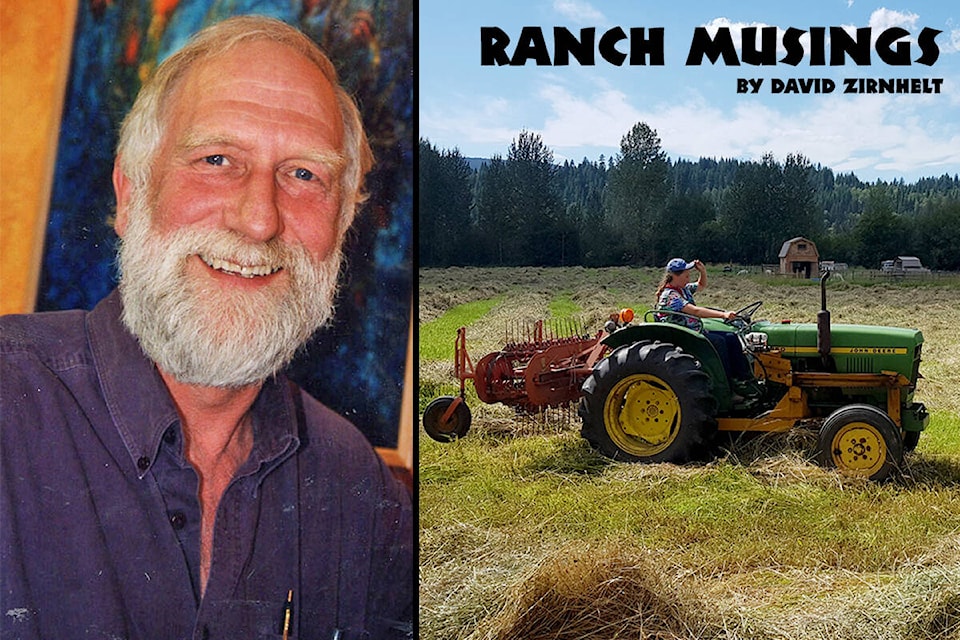What would I miss if I had to leave this ranch or if this ranch would leave me (if it ceased to exist as an entity)?
Having been on holidays for six full weeks this winter, I have a renewed sense of what brought us to this place: the peacefulness of close wilderness, the opportunity to do things for ourselves (food, shelter, recreation), to grow handy children, and the joy of livestock tending.
What we didn’t have was: easy access, modern conveniences, company, and material wealth (stuff). If one of us had to go out to work to raise capital and buy some things to make life easier and build our security, then the day-to-day existence could be burdensome: like milking the cow twice a day and maybe separating the cream from the milk.
Visitors were a treat. They usually brought some treats and extra pairs of hands.
Our move to an old homestead which had been abandoned for fifty years, offered us a place to build a cabin, plant a big garden and begin pushing back the growth of brush from the small hayfield.
My wife and I had been living on an older farm north of Ottawa while working (me for the federal government, Susan teaching) all the while dreaming of life on our own land. Susan’s family had sought and found a recreational refuge in the South Cariboo and I, with one of my brothers, had bought the last remaining piece of our father’s small ranch in Beaver Valley.
It was hardly sought after because it had no road access. But we were not prepared to see it leave the family. The memories of camping at this place in the summer were indelible. Camping, swimming, gleaning available food, boating and fishing in a carefree paradise were time tested activities going back to pre-settlement times.
I have said to some, that our life building a ranch (which is now two ranches — two families worked together) was a recapitulation of western economic development.
At the beginning we ate local food, buying just the basics in town, raising the rest ourselves. This was a stage after “hunter gathering.” Then we introduced small engines (chainsaw, rototiller, boat motor). Then horses and horse-drawn equipment were used to grow more food for people and animals.
We put up loose hay with horses before getting a square baler (traded for a team of horses). Then came the round baler and associated equipment. Draft horses were too slow (we worked up to nine on the fields) to feed a growing herd of cattle and avoid the plentiful rain here.
At each stage of development, we had to ask the question: were these developments sustainable? As we step away from the bounty of wilderness, can we sustain our farming and livelihood activities and still respect the sheer beauty of the place as it was.
Do you have a comment about this story? email:
editor@wltribune.com
Like us on Facebook and follow us on Twitter.
